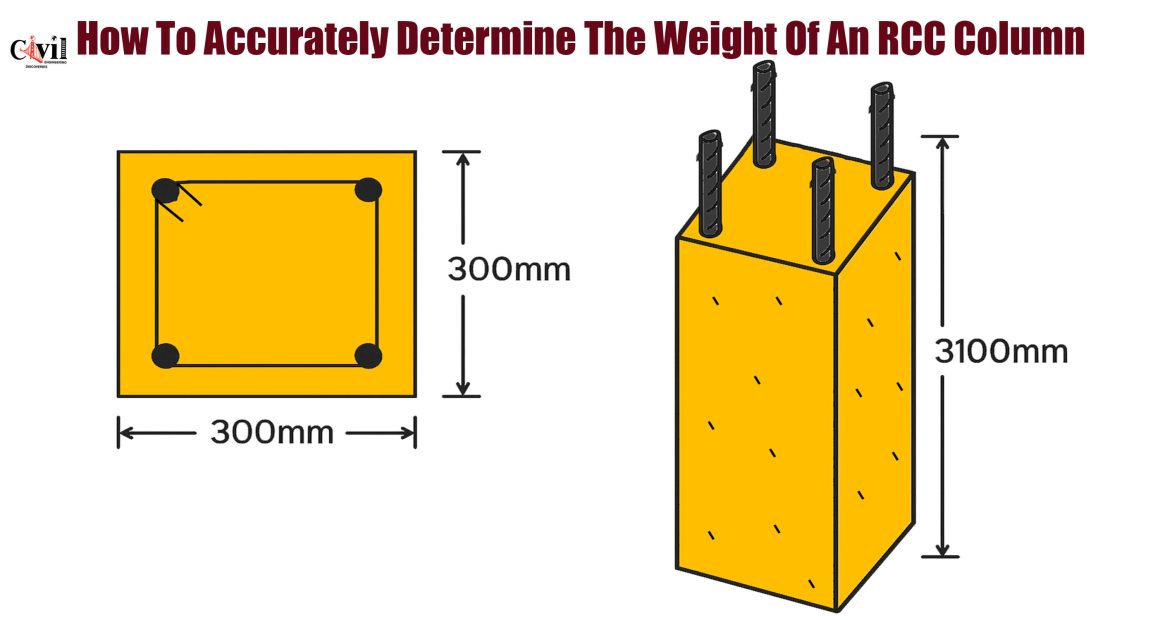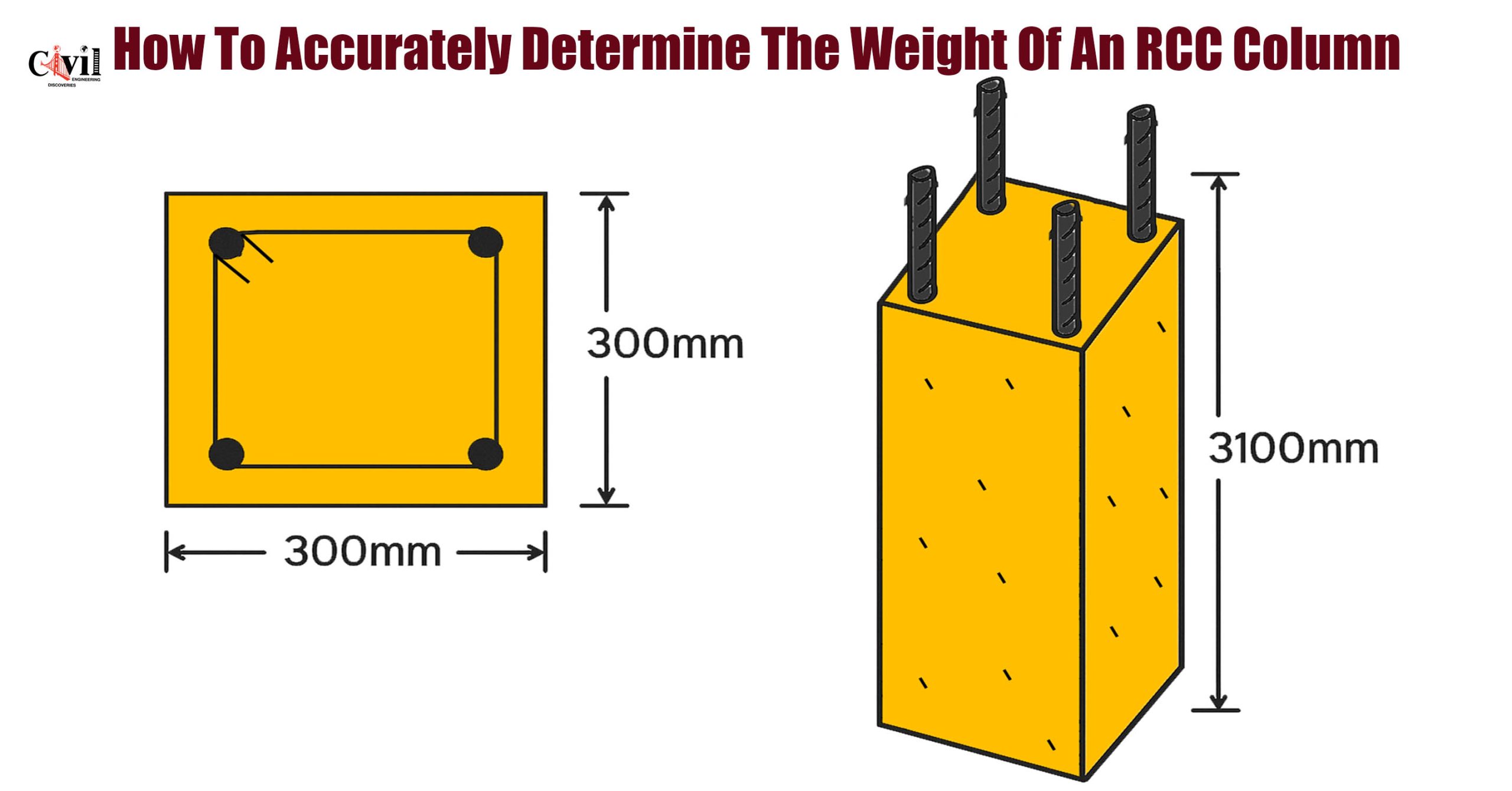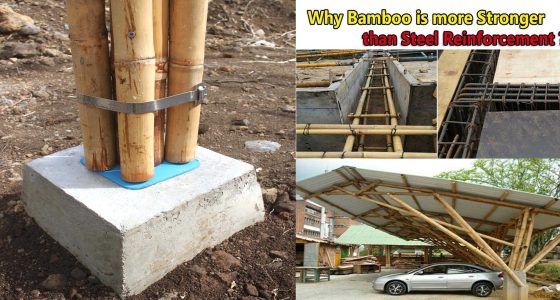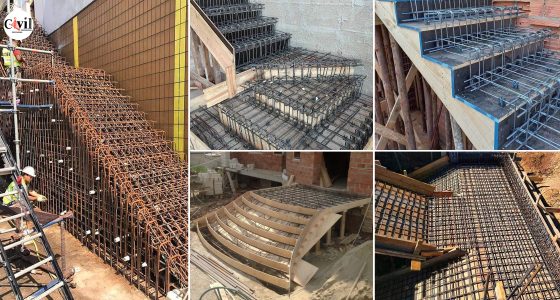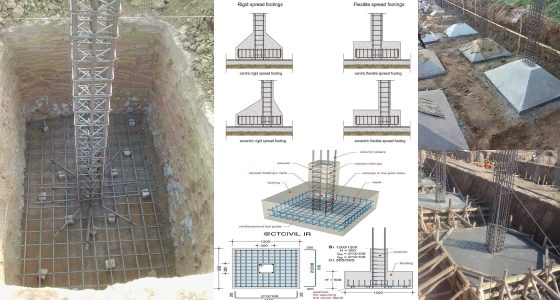Understanding the weight of an RCC (Reinforced Cement Concrete) column is vital in construction design. Accurate calculations help ensure structural stability and safety. Let’s walk through a simple example that explains how to determine the total weight of a reinforced concrete column step by step.
Dimensions and Material Properties
Column Dimensions
Height: 3.1 meters
Cross-sectional Area: 0.3 m × 0.3 m = 0.09 m²
Volume of Column: Length × Breadth × Height = 0.3 × 0.3 × 3.1 = 0.279 m³
Material Densities
Concrete Density: 2400 kg/m³
Steel (Rebar) Density: 7850 kg/m³
Self-Weight of Concrete in the Column
To calculate the self-weight of the concrete:
Self-Weight = Volume × Density
= 0.279 m³ × 2400 kg/m³
= 669.6 kg
Weight of Rebar in RCC Column
Most standard RCC columns use approximately 1% steel reinforcement. So, we calculate the rebar weight as follows:
Steel Volume = 1% of Concrete Volume
= (1/100) × 0.279 m³ = 0.00279 m³
Steel Weight = Volume × Density
= 0.00279 × 7850
= 21.9 kg
Total Weight of RCC Column
Now, summing the weight of concrete and steel:
Total Weight = Concrete Weight + Steel Weight
= 669.6 kg + 21.9 kg
= 691.5 kg
≈ 692 kg
Key Takeaways
Use consistent units throughout your calculations.
Consider the density of both concrete and steel.
Always include the reinforcement weight, even if it’s just 1%.
Approximation helps simplify reporting and design documentation.
Why Accurate Column Weight Matters
An accurate column weight calculation ensures proper:
Foundation design
Structural balance
Material estimation
Load transfer analysis
Skipping rebar weight can lead to underestimating the load. That’s a risk no engineer should take.
Click Here To See Why Steel Volume Is Not Deducted When Calculating Concrete Volume In RCC
